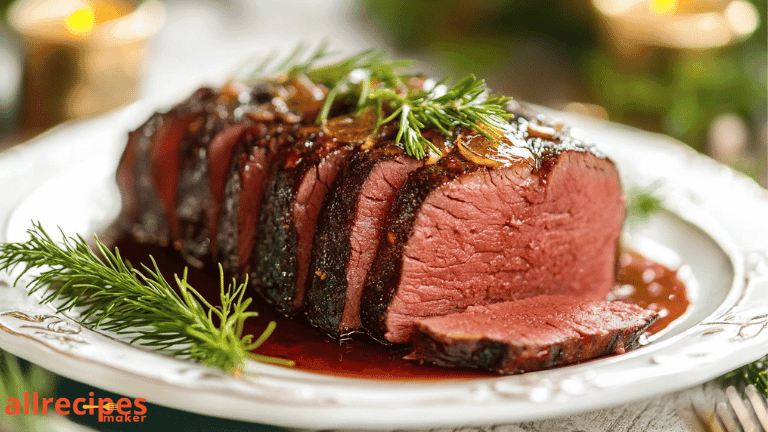How to Cook the Perfect Prime Rib Every Time
Cooking a prime rib might sound like a task best left to gourmet chefs, but with the right technique, you can make a flawless roast that will have everyone raving. Whether you’re prepping for a holiday dinner, a special occasion, or just want to impress your guests, this step-by-step guide will take the guesswork out of it. Let’s dive in!
Table of Contents
Table of Contents
1. Choosing the Perfect Prime Rib Cut
Not all prime ribs are created equal. Here’s how to pick the best cut for your meal:
- Bone-in vs. Boneless: A bone-in prime rib is the gold standard. The bones act as insulation during cooking, keeping the meat tender and flavorful. But if carving intimidates you, a boneless cut might be the way to go.
- Marbling Matters: Look for a cut with beautiful marbling—the thin streaks of fat running through the meat. More marbling = more flavor.
- Size it Right: Plan for about 1 pound per person. For example, a 6-pound roast will comfortably serve 6 people.
💡 Pro Tip: Ask your butcher for the “first cut” (or the loin end). It’s leaner and more uniform in size, which makes cooking easier.
2. Prepping Your Prime Rib for Success
Once you’ve got the perfect cut, prep it like a pro!
- Let It Come to Room Temperature: Take the roast out of the fridge at least 2-3 hours before cooking. This ensures even cooking.
- Season Generously: A simple seasoning mix can do wonders. Here’s a classic rub:
- 3 tbsp kosher salt
- 2 tbsp black pepper
- 2 tbsp garlic powder
- 1 tbsp rosemary (optional for an herby twist)
Massage the seasoning all over the roast, including the sides and ends.
💡 Pro Tip: For even deeper flavor, season your roast a day in advance and let it sit uncovered in the fridge overnight. This is called a dry brine, and it makes a big difference!
3. Cooking the Prime Rib
Cooking a prime rib is all about precision. Follow these steps to nail it:
Step 1: Preheat the Oven
Set your oven to 450°F (232°C). This high heat gives the roast a gorgeous crust.
Step 2: Place the Roast Correctly
Place the roast bone-side down in a roasting pan with a rack. If you’re using a boneless cut, place it fat-side up.
Step 3: Start with a High Heat Sear
Roast the meat at 450°F for 15 minutes to sear the outside and lock in the juices.
Step 4: Lower the Heat
Reduce the oven temperature to 325°F (163°C) and continue roasting. Use this cooking chart to determine the time:
| Doneness | Internal Temp (°F) | Approx. Cooking Time (Per Pound) |
|---|---|---|
| Rare | 120°F-125°F | 15 minutes |
| Medium-Rare | 130°F-135°F | 20 minutes |
| Medium | 140°F-145°F | 25 minutes |
Always use a meat thermometer to check the internal temperature—this is the key to perfection!
4. Resting is Non-Negotiable
When the roast reaches your desired temperature, take it out of the oven and tent it loosely with foil. Let it rest for 20-30 minutes. Resting allows the juices to redistribute, making every bite juicy and flavorful.
💡 Pro Tip: During resting, the meat’s internal temperature can rise by 5-10°F, so keep that in mind when you pull it out of the oven.
5. Carving Like a Chef
Now for the grand finale—carving!
- If you used a bone-in roast, run a sharp knife along the bones to separate the meat.
- Slice the roast into 1/2-inch thick slices.
- Serve with au jus or horseradish sauce for that steakhouse vibe.
💡 Pro Tip: Use a long slicing knife for cleaner cuts, and don’t rush—presentation is part of the wow factor!
FAQs About Cooking Prime Rib
Q1: Can I cook a prime rib in advance?
Yes, but it’s best served fresh out of the oven. If you must cook it ahead, slightly undercook it, and reheat gently to avoid overcooking.
Q2: What if I don’t have a roasting rack?
No worries! Place the roast on a bed of thickly sliced onions, carrots, and celery. Not only will this keep the meat elevated, but you’ll also have delicious vegetables to serve on the side.
Q3: How do I make the perfect au jus?
Deglaze the roasting pan with a cup of red wine or beef stock, scraping up all those flavorful bits. Simmer with additional beef stock, season to taste, and voilà!
Bonus Tips for Prime Rib Perfection
- Try Reverse Searing: Instead of starting with high heat, cook the roast low and slow at 250°F until it’s close to your desired doneness. Then, blast it at 500°F for a crispy crust.
- Invest in a Meat Thermometer: This is non-negotiable. Guessing the doneness is a recipe for disaster!
- Add Garlic Butter: Slather some garlic herb butter on the roast during the last 10 minutes of cooking for an extra layer of flavor.
Wrapping It Up
Cooking the perfect prime rib doesn’t have to be stressful. With the right cut, a little patience, and a solid plan, you can create a roast that’s tender, juicy, and bursting with flavor. Whether it’s your first time or you’re a seasoned pro, these tips and tricks will help you wow your guests every time.
Ready to give it a go? Don’t be afraid to experiment, and most importantly—enjoy the process!
There are no reviews yet. Be the first one to write one.

